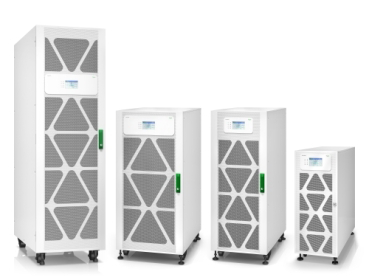UPS, that is, uninterruptible power supply, is a system equipment that connects batteries (mostly lead-acid maintenance-free batteries) with the host, and converts DC power into mains power through module circuits such as the host inverter.
It is mainly used to provide stable and uninterrupted power supply to a single computer, computer network system or other power electronic equipment such as solenoid valve and pressure transmitter. When the mains power input is normal, the UPS stabilizes the mains power and supplies it to the load for use. At this time, the UPS is an AC voltage regulator. At the same time, it also charges the battery in the machine: when the mains power is interrupted (accidental power failure), The UPS immediately continues to supply 220V AC power from the battery to the load through the inverter switching and conversion method, so that the load can maintain normal operation and protect the load software and hardware from damage. UPS devices usually provide protection against either too high or too low voltage.
UPS and DC power supply are important power supply guarantee equipment for enterprises. It can ensure that the computer system continues to work for a period of time after a power outage, so that users can save the disk in an emergency, so that users will not affect their work or lose data due to power outage.
The UPS power system consists of five parts: main circuit, bypass, battery and other power input circuits, rectifier (REC) for AC/DC conversion, inverter (INV) for DC/AC conversion, inverter and bypass output switching circuit and energy storage battery.
The main advantage of an uninterruptible power supply is its uninterrupted power supply capability. When the AC input of the mains power is normal, UPS rectifies the AC power into DC power, and then inverts the DC power into stable and impurity free AC power for use by the downstream load. Once the AC input of the mains power is abnormal, such as under voltage, power outage, or abnormal frequency, the UPS will activate the backup energy – battery, and the rectifier circuit of the UPS will be turned off. Correspondingly, the DC power of the battery will be reversed into stable and impurity free AC power, which will continue to be used by the subsequent load. This is the origin of UPS’s uninterrupted power supply capability.
Of course, the uninterrupted power supply time of UPS is not infinite, and this time is limited by the amount of energy stored in the battery itself. If there is an AC power outage, all you need to do during the precious time of UPS battery power supply is to quickly restore AC power.
The duration of power supply is determined by the capacity of the battery,
The calculation method for UPS battery configuration is now introduced as follows:
The following factors affect standby time:
1. The total power of the load P (W), considering the power factor of the UPS, can be directly calculated in volt ampere (VA) units of P when calculating
2. V low is the termination voltage (V) of the battery after discharge, where V low for a 2V battery is 1.7V and V low for a 12V battery is 10.2V
3. V float is the float charging voltage (V) of a battery, where V float for a 2V battery is 2.3V and V float for a 12V battery is 13.8V
4. Kh is the battery capacity conversion factor (Ct/C10), with a 10Hr discharge rate of 1, a 5Hr discharge rate of 0.9, a 3Hr discharge rate of 0.75, and a 1Hr discharge rate of 0.6
5. I is the working current of the battery (A), T is the continuous discharge time (H), and V is the DC supply voltage of the UPS external battery (V)


